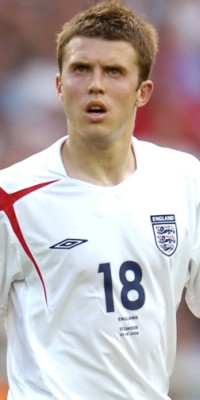|
The English Attitude
Last Updated : 28-Jun-2006 byAn encounter with a depleted Portugal side gives England the chance to match that achievement, after which the tedium of the first four games will presumably be forgotten and replaced with the type of ‘England expects' hype which normally emerges from its box on these occasions.
The good news is that, on this occasion, England cannot play the Germans in a semi-final. To play them, we must make the final, where our record against them (played one, won one), is rather better.
To do so, England must improve. But although it was hardly a performance to give any of the realistic contenders a sleepless night, England's 4-1-4-1 formation, with Michael Carrick playing deep, did at least hint at the type of sophistication necessary to succeed at the top table.
Every two years, it is always interesting to compare the approaches and attitudes of the English with their continental counterparts. These seem, on a consistent basis, to hold back players who can undoubtedly hold a candle to the very best, from reaching their full potential.
Unlike on these shores, where channel balls and pressing are ingrained in our culture, in continental Europe, or South America, or wherever else successful teams are groomed, keeping possession of the football is generally regarded as the number one priority. There are immediately two good reasons for this. The first is that it is only generally possible to score if you have the ball; the second is that you can only concede if you don't. Add in the fact that keeping the ball and knocking it about patiently is a good deal less knackering than running after the damn thing, and the case for keeping possession is made – especially in major championships, when the weather, inevitably, is generally hot.
But keeping possession is not as simply as telling players to knock it about at the back. Other nations seem more attuned to the fact that, in order to keep the ball, it is necessary to find a balance between players capable of caressing the ball, and players with pace and athletic qualities.
This, sadly, is the problem England encounter in trying to harness Frank Lampard and Steven Gerrard in the centre of midfield. Never mind the fact that neither provides an effective screen to the back four – both are athletes first, and footballers second. Nothing wrong in that, and they are admittedly exceptional athletes and very fine footballers, but any top club considering signing either would target them for their energy, drive and marauding forward runs, rather than because they help keep the side ticking in possession.
|
It would appear that England intend, from now on, to adopt this system, with Rooney deployed alone in attack. There is no doubt that this fails to get the best out of England's best player, who is not at all comfortable as an out-and-out front man, but then the system is not as negative as its perception would suggest.
Indeed, the attitude is symptomatic of the English obsession with shoehorning players into labelled positions. Gerrard, apparently, is a midfielder, sub-categorised as attacking. So too Lampard, whilst Beckham is also a midfielder, but more specilfically, right-sided. Rooney, meanwhile, is a striker, just Owen or Crouch, albeit that he might fit that bracket of deep-lying.
This is plainly nonsense. For United – and, when played alongside an out and out striker, for England – Rooney frequently finds himself occupying the same positions as Lampard does for Chelsea, and Gerrard does for Liverpool. He is of course, capable of playing further forwards, as he must in this England line up, but his natural role defies classification as either midfielder or forward, just as Bergkamp, Totti, Riquelme or Maradonna escape such definition.
Should England shelve this new system, and return to an old-fashioned 4-4-2, then the devil will be in the detail. It will not entail a front two at all, since Rooney will be found dropping into his own half to receive the ball and assist the team. If Lampard and Gerrard are also to occupy this patch, then the lines of communication and responsibility will be well and truly confused.
So the choice should be relatively simple. Either sacrifice Rooney, by playing him as a lone striker – or drop Lampard, the least effective of that central axis to date, and have Gerrard and Rooney behind Peter Crouch. In the case of the former option, remember that Arsenal reached a European Cup final with Thierry Henry, another of those ethereal floaters, nominally deployed as a loan front man. They accepted that, on occasions, there would be no-one providing the outlet of a target man. Their solution was to keep the ball and play through their midfield.
Which brings us back to where we started. Keeping the ball, and building a team to do so. It is a simple game, ultimately, football. England may have realised it just in time, but the question of whether we have the ability to apply this new-found knowledge remains.


